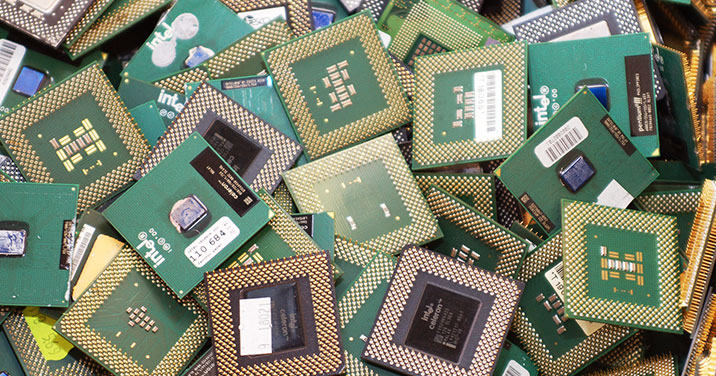
Radical New Tech Solution For E-Waste
As you probably know, one of the least desirable side effects of today’s technologically based society is the untold millions of tons of electronic waste or E-Waste. Yes, it is true that there are some efforts underway around the world to recycle some of this E-Waste. Yet, according to a U.N. think tank, the Advanced Study of Sustainablilty, a mere 15% of the world’s E-Waste was recycled in 2014.
One factor in this rather dismal recycling percentage is due to the undeniable economics of E-Waste. The hard to ignore fact is the E-Waste recycling is labor intensive and in many respects less cost effective than you might hope. With those factors in mind, a team of scientists at Rice University and the Indian Institute of Science (IIS) have developed what looks to be be a revolutionary E-Waste recycling technology.
To best understand this new approach it is helpful to first look at current E-Waste recycling practices and technologies. Note that current E-Waste recycling employs the use of heat, chemicals or both. The challenge is that the chemicals utilized for E-Waste generate toxic fumes. Moreover, the use of heat or chemical applications does consume a fair amount of energy.
In addition, the E-Waste recycling techniques in use today are limited in the amount of reusable products and materials that can be reclaimed. For the record, the most common materials recovered in E-Waste recycling include: aluminum, copper, gold, nickel, lead, silver and tin.
That is the background information you need to understand just how innovative the new approach really is in practice. You see, the scientists have developed a methodology for in essence deep freezing the E-Waste. Once frozen to extreme cold temperatures, the E-Waste can then be pulverized. Note that in this case, pulverizing means down to the nanoscale level. (Recall that nano means billionth).
In other words, the E-Waste is now transformed into extraordinarily small particles. Note that it is the extreme cold, as in minus 182 degrees Fahrenheit that turns the E-Waste into brittle material that is then much easier to pulverize. There’s more. Cold, and most especially extreme cold has the very desirable effect of making materials much easier to separate.
Once the initial cooling and separation process is complete, the nanoscale particles can then be sorted by conventional sorting and separation technologies. In other words, the use of wet shaking tables, magnetism, etc.
Bottom line: if this E-Waste recovery technology can be scaled up, this could be turn out to be a workable solution for the ever growing amounts of E-Waste around the world.









